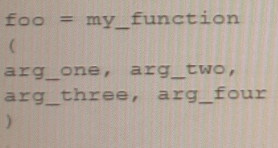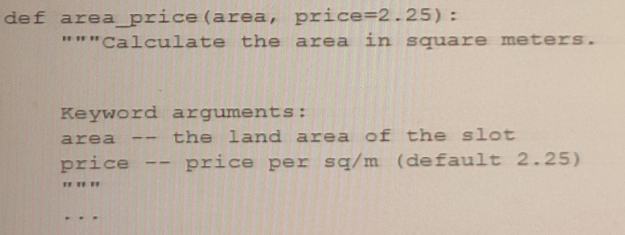Master Python Institute PCPP-32-101 Exam with Reliable Practice Questions
What does the term deserialization mean? Select the best answer.
Correct : A
Deserialization is the process of converting data that has been serialized
For example, if you have a Python objectmy_objand you want to serialize it to a JSON string, you might do something like this:
import json
serialized_obj = json.dumps(my_obj)
To deserialize the JSON string back into a Python object, you would use thejson.loads()method:
deserialized_obj = json.loads(serialized_obj)
This would convert the JSON string back into its original Python object form.
Deserialization is the process of converting a sequence of bytes, such as a file or a network message, into a Python object. This is the opposite of serialization, which is the process of converting a Python object into a sequence of bytes for storage or transmission.
Start a Discussions
What is a___traceback___?
(Select two answers )
Correct : A, D
The correct answers areA. An attribute owned by every exception objectandD. An attribute that holds interesting information that is particularly useful when the programmer wants to store exception details in other objects. A traceback is an attribute of an exception object that contains a stack trace representing the call stack at the point where the exception was raised. The traceback attribute holds information about the sequence of function calls that led to the exception, which can be useful for debugging and error reporting.
Start a Discussions
Which of the following examples using line breaks and different indentation methods are compliant with PEP 8 recommendations? (Select two answers.)
A)

B)

C)


Correct : B, D
The correct answers areB. Option BandD. Option D. Both options B and D are compliant with PEP 8 recommendations for line breaks and indentation. PEP 8 recommends using 4 spaces per indentation level and breaking lines before binary operators. In option B, the arguments to theprintfunction are aligned with the opening delimiter, which is another acceptable way to format long lines according to PEP 8. In option D, the second line is indented by 4 spaces to distinguish it from the next logical line.
Start a Discussions
Look at the following examples of comments and docstrings in Python Select the ones that are useful and compliant with PEP 8 recommendations (Select the two best answers.)
A)

B)

C)

D)

Correct : B, D
According to PEP 8 recommendations, the two best options areOption BandOption D.
Start a Discussions
What will happen if the mam window is too small to fit all its widgets?
Correct : A
If the main window is too small to fit all its widgets,some widgets may be invisible. So, the correct answer isOption A.
When a window is not large enough to display all of its content, some widgets may be partially or completely hidden. The window will not automatically expand to fit all of its content, and no exception will be raised. The widgets will not be automatically scaled down to fit the window's size.
If the main window is too small to fit all its widgets, some of the widgets may not be visible or may be partially visible. This is because the main window has a fixed size, and if there are more widgets than can fit within that size, some of them will be outside the visible area of the window.
To avoid this issue, you can use layout managers such asgrid,pack, orplaceto dynamically adjust the size and position of the widgets as the window changes size. This will ensure that all the widgets remain visible and properly arranged regardless of the size of the main window.
https://www.tkdocs.com/tutorial/widgets.html#managers
https://www.geeksforgeeks.org/python-tkinter-widgets/
https://anzeljg.github.io/rin2/book2/2405/docs/tkinter/introduction.html
Start a Discussions